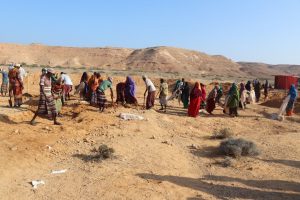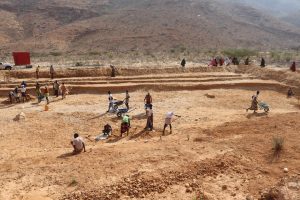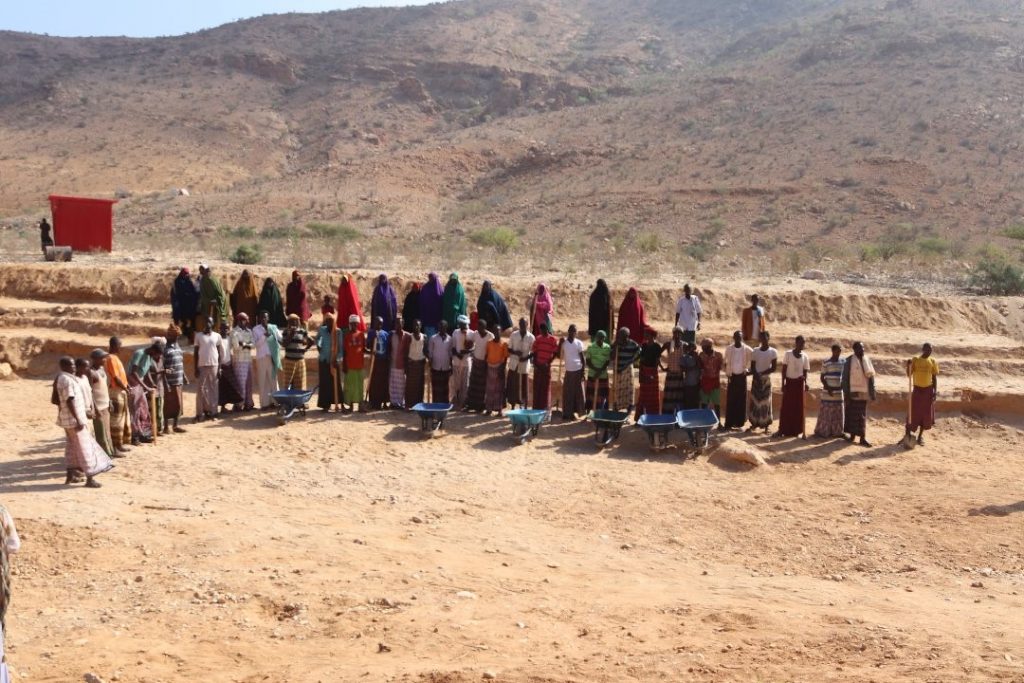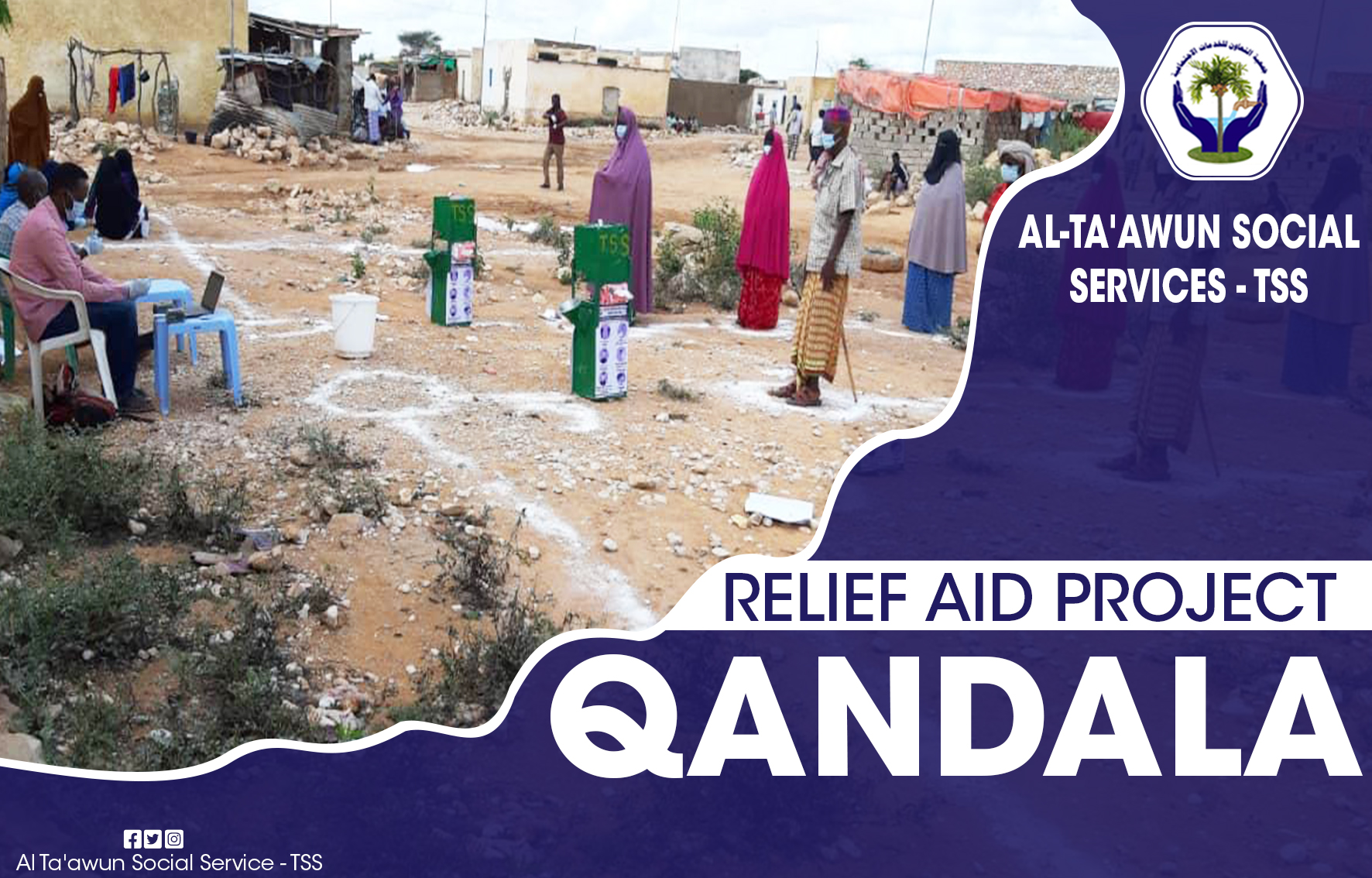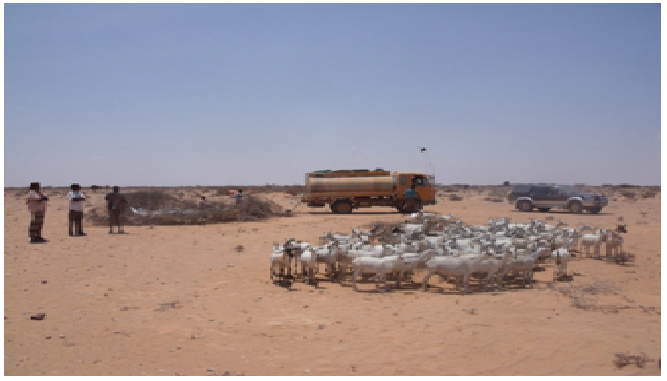To be submitted by the Cooperating Partner to WFP Area Office within 15 days after end of projects.
| PUN-CP/TSS/835/FFA/2018 |
PROJECT FLA NO.
- PROJECT INFORMATION
| 1.1 Region | 1.2 District | 1.3 WFP Area-office | 1.4 Cooperating Partner | 1.5 No. Beneficiaries | 1.6 Project Start & End Dates | 1.7 Report Submission Date | ||
| Bari | Qandala | Bosaso | TSS | 460 | 1 Aug TO 31 Dec 2018 | 27 Dec 2018 | ||
| 1.8 Project Activity Type(s)
|
1.9 CP Staff Member Name and Title
(person completing this form and certifying accuracy) |
1.10 CP Staff Member Contacts | ||||||
| Water catchments | Abdirashid Yusuf /Director | 7799317 | ||||||
- INTRODUCTION/BACKGROUND
| Qandala district is currently undergoing a serious humanitarian situation resulting from a prolonged drought, and poor social services as well the displacement of the local residents. The drought situation has intensified due to the failure of several rainy seasons which has caused severe water shortage and depletion of pasture and this has seriously affected the lives of the pastoral communities and urban poor who directly and indirectly depend on livestock. There is severe water shortage which adversely affected the lives of the poor communities in the district whose main income source is livestock, farms, agro pastoralist livelihoods ) Most effected people whom are women and children with limited/lack of access to food, water, shelter and sanitation. The target villages of Qandala and Buruc have been identified due to extreme water and food shortages due to recurrent droughts. The drought and displacement also caused very high food prices contributing to the deterioration of the food security situation of the vulnerable communities. |
- PROJECT OBJECTIVES
|
- BENEFICIARIES & TARGETING
| 4.1 Participants (Workers/Trainees) & Beneficiaries | 4.2 Project Committee | |||||||
| Females | Males | Total | Females | Males | Total | |||
| Planned Participants | 100 | 200 | 300 | Members | 4 | 10 | 14 | |
| Actual Participants | 90 | 170 | 260 | Leadership | 2 | 5 | 7 | |
| Planned Beneficiaries | 230 | 230 | 460 | |||||
| Actual Beneficiaries | 194 | 266 | 460 | |||||
| 4.3. Targeting – Explain how beneficiary households were selected, including criteria used and selection process | ||||||||
| · 460 households receive food voucher for 5 months for participating in the construction of planned projects
· Communities obtain safe, reliable grazing land. · Communities obtain safe, potable water for both human & Livestock. · Improve environmental& Soil conservation management. · Safeguard the environment by creating an alternative source of livelihood for drought affected & charcoal burners. · In the targeting process we selected the different types of the community, we gave the percentage of male and female of the beneficiary households and then selected the needy ones yet suitable to perform the job. We have selected from the youth, community leaders, local government workers by male and female. |
||||||||
- PROJECT INPUTS
- FOOD RECEIPTS AND DISTRIBUTIONS
| Commodity | Commodities In | Commodities Out | I. Closing Stock (D-H) | |||||||
| A. Specify | Waybill Number | B. Opening Stock | C. Receipts | D. Total In Stock (B+C) | E. Distributed | F. Return to WFP | G. Losses | H. Total Out (E+F+G) | ||
| Cereals | ||||||||||
| Pulses | ||||||||||
| Veg Oil | ||||||||||
| CSB | ||||||||||
| Salt | ||||||||||
| Other | ||||||||||
| Total | ||||||||||
- NON-FOOD ITEMS (Tools & Materials)
| Item | Source (Community, CP, WFP, Other) | Quantity Planned | Quantity Provided | |
| 1 | Wheel barrow | 14 WFP , 26 TSS | 40 | 40 |
| 2 | Mattocks | 141 WFP | 141 | 141 |
| 3 | Spades | 76 WFP, 4 TSS | 80 | 80 |
| 4 | Bucket | WFP | 100 | 100 |
| 5 | Corrugated Roofing | TSS | 44 | 44 |
| 7 | Lumber | TSS | 40 | 40 |
| 8 | tanker-bar-digging | TSS | 20 | 20 |
| 9 | Water tank | TSS | 8 | 8 |
| 10 | Water Tube | TSS | 2 | 2 |
- PROJECT OUTPUTS (Number & Type of Assets Created/Rehabilitated or Persons trained) AND ACTIVITY COMPLETION STATUS.
| Activity | Units | Planned | Actual | Percent Total |
| Excavation – 1st layer | M3 | 5022 | 5022 | 100% |
| Excavation – 2nd layer | M3 | 4544 | 4544 | 100% |
| Diverting inlets | M3 | 1202 | 1202 | 100% |
| Haulage | M2 | 10767 | 10767 | 100% |
| Embankment – 1st layer | M2 | 376 | 376 | 100% |
| Embankment – 2nd layer | M2 | 376 | 376 | 100% |
| Excavation – 3rd layer | M3 | 13615 | 13615 | 100% |
| Excavation – 4th layer | M3 | 12180 | 12180 | 100% |
| Haulage | M2 | 7746 | 7746 | 100% |
| Embankment – 3rd layer | M2 | 376 | 376 | 100% |
| Embankment – 4th layer | M2 | 376 | 376 | 100% |
| Bush clearance | M2 | 67 | 67 | 100% |
| Total | Workdays |
- PROJECT OUTCOMES
| · Improved access to assets and basic services including community and market infrastructure.
· The rehabilitation of 2 water catchments completed · 460 Households were assisted with cash/vouchers distributions where each family received $ 90 per month for 5 months. The total value of cash & vouchers distributed was $ 207,000.0] · Reduce water shortage and access water point. |
- CROSS CUTTING ISSUES (Gender considerations, Environmental concerns etc.)
| The project addressed the socio-economic problems faced by both men and women. Water shortages affected both genders. Men had to migrate long distances with livestock to reach water. Women had to walk long distances to water sources to collect water for household use, exposing themselves to security risks and increasing their work burden.
TSS made all possible efforts to facilitate women participation in the activities where possible. An estimated 40 percent of beneficiaries of monthly household transfers were female and 60 percent male. About 43% of the project management committee at community level were women. TSS encouraged active women participation in discussions and decisions regarding the project and 2 women had been included in the top leadership of the project management committees. |
- CHALLENGES AND LESSONS LEARNED
| The project implementation went very well in terms of food distributions, voucher distributions and progress of planned activities. All expected project deliverables were achieved satisfactorily. However, there were some minor technical challenges which caused some people to miss the food during distributions and be paid at a later stage. These were mainly due to fingerprint issues and no voucher cases, but we received prompt assistance from the technical people in WFP and resolved the issues immediately. As of now, all the people have received their full entitlements. On the other hand, the people were happy to receive cash & voucher transfers more than the in-kind food and requested next projects to be totally cash and vouchers. |
- CONCLUSIONS AND RECOMMENDATIONS
| Thanks to WFP for support vulnerable community, the rehabilitation of water catchments was successfully completed with satisfaction of the participants over the participatory approach and their active involvement in every stage of the planning. Implementation and completion this planning was special for them as they felt owners of the whole process and identified projects which reflected the real needs of the community. Women Groups particularly mentioned that it was first time for them to meaningfully participate in this kind of important community project |
- ANNEXES (Project Photos, Success Story etc
